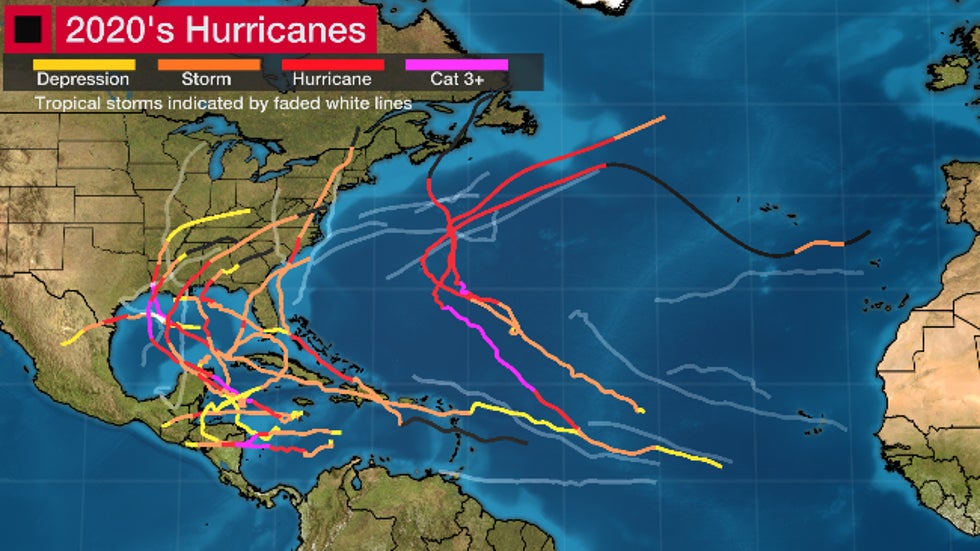Jonathan Erdman
The 2020 Atlantic hurricane season produced 14 hurricanes, one more than previously thought, according to a recent post-season analysis.
In a final report released Saturday, the National Hurricane Center found Gamma - the season’s 24th named storm - briefly strengthened to a hurricane before it made landfall on Mexico’s Yucatan Peninsula on Oct. 3, 2020.
Gamma’s upgrade to a hurricane bumped the 2020 season total up to 14 hurricanes, one shy of the all-time record for any single Atlantic hurricane season of 15 hurricanes in 2005.
The 2020 season’s 30 total storms smashed the previous record of 28 storms also from 2005.
Get Your Patio Ready for Warmer Weather (SPONSORED)
 Tracks of the 14 hurricanes in the 2020 Atlantic hurricane season, color coded by intensity, as well as the other 16 storms which never became hurricanes, shown as grayed out tracks.
Tracks of the 14 hurricanes in the 2020 Atlantic hurricane season, color coded by intensity, as well as the other 16 storms which never became hurricanes, shown as grayed out tracks.NHC forecasters occasionally adjust the intensity of a tropical storm or hurricane after the season is over and they’re able to closely examine all data.
In Gamma’s case, this upgrade to a hurricane was based on the appearance of an eye in satellite images and pressure data from a surface weather sensor suggesting Gamma was rapidly intensifying until landfall.
Regardless of its wind intensity, up to 15 inches of rain from Gamma triggered deadly flash flooding and landslides in Mexico's Chiapas and Tabasco states, according to the NHC report.
2020’s hurricane tally was double the season average of seven hurricanes.
Six of those 14 hurricanes - Hanna, Isaias, Laura, Sally, Delta and Zeta - made landfall in the mainland U.S.
Five other tropical storms also moved ashore in the U.S., which lead to a record 11 U.S. landfalling tropical storms or hurricanes in one season.
In another post-season adjustment, NHC forecasters found Marco grazed the Louisiana Gulf Coast, but never made landfall.
Past NHC reanalyses found 2018’s Hurricane Michael and 1992’s Hurricane Andrew each made Category 5 landfalls in the Florida Panhandle and South Florida, respectively.
2021 hurricane season outlooks from both Colorado State University and The Weather Company, an IBM Business, forecast eight hurricanes, slightly above the yearly average.
The Weather Company’s primary journalistic mission is to report on breaking weather news, the environment and the importance of science to our lives. This story does not necessarily represent the position of our parent company, IBM.
The Weather Company’s primary journalistic mission is to report on breaking weather news, the environment and the importance of science to our lives. This story does not necessarily represent the position of our parent company, IBM.

No comments:
Post a Comment